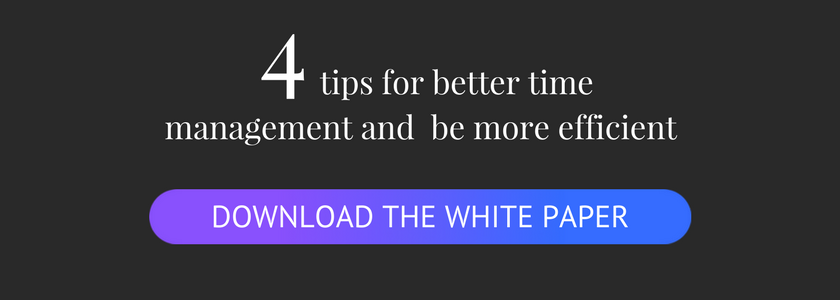Want to improve your time management to be more productive and put an end to the feeling of constantly being overwhelmed? The Getting Things Done method promises a way to do just that. Here’s what you need to know about this productivity tool that requires rigor and patience.
The Getting Things Done method
In his book “Getting Things Done, the art of stress-free productivity”, David Allen highlights an innovative method for planning and prioritizing the different tasks, projects and desires that occupy our minds. Its success with the general public was such that, four years after its publication, the Getting Things Done method became a registered trademark.
GTD is not a simple time management method but rather a method of managing both private and professional activities. It is often compared to the Bullet Journal, which also offers its users the possibility of managing these two spheres of their existence.
« Your mind is for having ideas, not holding them » David Allen.
The method is based on the premise that only a clear and serene mind can achieve the optimal level of productivity. In his view, it is only by freeing oneself from overthinking and by entrusting tasks and desires to an outsourced system that one can truly be efficient.
The five main steps of the GTD method
The Getting Things Done method is based on 5 steps: collection, clarification, organization, review and action.
1 – Collection
Collection consists in identifying all tasks, whether private or professional. This collection must take into account current or future projects as well as different ideas and desires. The collected information is then placed in an “inbox”. This can take the form of a small notebook, a drawer or a list created on an app like Evernote. The goal is to clarify the mind in order to have an overview of all work and centralize one’s thoughts in one place!
2 – Clarification
Clarification consists in analyzing the elements of the inbox one by one in order to define their nature as well as the different actions they require. This step makes it possible to distinguish between tasks that can be completed immediately and projects that need to be planned.
3 – Organization
Then comes the organization phase! It’s time to create new folders to empty out your inbox. Projects or ideas that you’re unsure of will go into an “incubation” file. Ongoing projects will go into a dedicated folder and any element that can be used to carry them out (such as plans or contact information) should be gathered in a folder entitled “references.” Finally, the first tasks required for a project will be recorded in a separate file and sorted according to their characteristics. These can then be delegated, planned in the agenda on a specific date or included in a schedule.

4 – Revision
Revision is an essential step in the Getting Things Done method. In fact, it is what guarantees the method’s success! It’s important to review the content of your inbox and various folders by adding new elements, deleting tasks that have been completed or moving projects from the “incubation” folder to the “active projects” folder.
5 – Action
Finally, action is based on our ability to decide which task to perform at a given moment in time. To do this, several criteria must be considered: context, time available and the physical and mental energy available to complete the task. Once this first sorting has been carried out, you can prioritize and choose which task is the most important to accomplish first.
Getting Things Done: Moving Towards Controlled Productivity
GTD is an activity management tool that allows you to regain control over your days so you feel less overwhelmed. While it’s easy to understand how it works, mastering the steps requires a little time. As such, don’t hesitate to customize the method and add different steps that are specific to your way of working, especially if you use it to manage both your personal and professional life.
Finally, though the Getting Things Done method can easily be put into practice with a pen and a few blank sheets of paper, using it in the digital format offers the most advantages. In fact, is possible to get started by using an online project management tool like Trello to save time during the collection, clarification and organization phases!
Have you tried this method? Share your experience with us!


